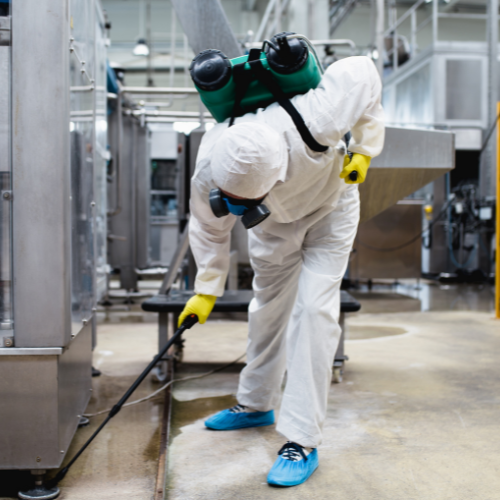Industrial equipment serves as the backbone of various manufacturing processes, enabling businesses to achieve efficiency, productivity, and innovation. To maintain optimal performance and extend the lifespan of these valuable assets, proper cleaning practices are paramount. Regular and effective industrial equipment cleaning not only enhances efficiency but also prevents costly breakdowns and ensures a safe work environment. In this guide, we’ll delve into the best practices for industrial equipment cleaning, covering techniques, safety measures, and the role of high-quality cleaning solutions.
Importance of Industrial Equipment Cleaning

Industrial equipment operates in demanding environments, exposed to dirt, dust, debris, and even corrosive substances. If left unattended, these elements can compromise equipment efficiency and lead to costly repairs or replacements. Proper cleaning removes contaminants that hinder performance, reduces the risk of breakdowns, and contributes to the safety of employees and the overall workplace.
Types of Industrial Equipment Cleaning
Industrial equipment cleaning encompasses a range of techniques tailored to specific machinery and components. Routine cleaning involves removing surface dirt and debris to maintain equipment appearance and functionality. Deep cleaning, on the other hand, involves a more thorough approach that includes disassembling components, cleaning hard-to-reach areas, and addressing accumulated grime.
Best Practices for Industrial Equipment Cleaning
- Establish Regular Cleaning Schedules: Develop a cleaning schedule that outlines routine cleaning tasks and their frequency. Having a structured plan ensures that equipment remains clean and operational at all times.
- Prioritize Safety: Before cleaning, ensure equipment is properly powered off, isolated, and secured. Provide employees with appropriate personal protective equipment (PPE) to ensure their safety when handling cleaning agents or performing maintenance.
- Follow Manufacturer Guidelines: Consult equipment manufacturer guidelines for recommended cleaning procedures and suitable cleaning agents. Using the wrong agents can lead to equipment damage or void warranties.
- Use Appropriate Cleaning Tools: Select cleaning tools that are suitable for the equipment and contaminants you’re dealing with. Brushes, scrubbers, vacuum cleaners, and specialized cleaning agents all play a role in effective cleaning.
- Start with Dry Cleaning: Begin by dry cleaning methods, such as brushing or blowing away loose dirt and debris. This prevents the accumulation of stubborn grime when liquids are introduced.
- Choose the Right Cleaning Agents: Select cleaning agents that are compatible with the materials of your equipment. Different materials, such as metal, plastic, or rubber, may require different cleaning agents to prevent damage.
- Consider Steam Cleaning: Steam cleaning is a powerful method for removing dirt, grease, and grime from equipment surfaces. It also sanitizes surfaces, making it an effective option for maintaining cleanliness and hygiene.
- Utilize Pressure Washing: Pressure washing is particularly useful for outdoor equipment or machinery with hard surfaces. Adjust the pressure to avoid damaging sensitive components.
- Address Hard-to-Reach Areas: Many industrial machines have intricate components that can collect dirt and grime. Disassemble equipment when necessary to access these hard-to-reach areas and ensure a thorough clean.
Safety and Environmental Considerations
- Use Appropriate Personal Protective Equipment (PPE): Equip your employees with the necessary PPE, such as gloves, goggles, and respirators, when dealing with cleaning agents or hazardous materials.
- Properly Dispose of Waste: Follow local regulations for the disposal of waste generated during cleaning. Hazardous waste must be handled and disposed of according to specific guidelines.
- Ventilation and Air Quality: Ensure proper ventilation in the cleaning area to prevent the buildup of fumes from cleaning agents. Good air quality contributes to the well-being of employees and prevents exposure to harmful substances.
Professional Cleaning Solutions for Industrial Equipment
Choosing the right cleaning solutions is a critical part of the industrial equipment cleaning process. Clean 85, a full-service chemical distributor, offers a range of professional pressure washing chemicals and cleaning solutions tailored to industrial environments. These solutions are designed to effectively remove grime, grease, and contaminants while protecting equipment surfaces.
Conclusion
Effective industrial equipment cleaning is a key component of maintaining operational efficiency, safety, and equipment longevity. By implementing best practices such as regular cleaning schedules, adhering to safety guidelines, and using high-quality cleaning solutions, businesses can ensure that their equipment performs optimally and remains an asset for years to come.
